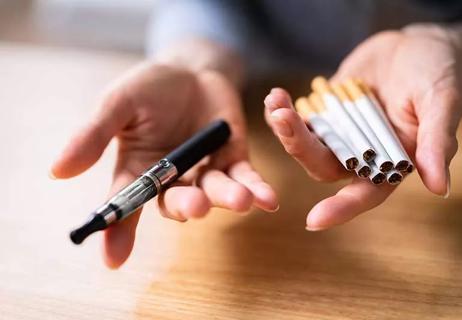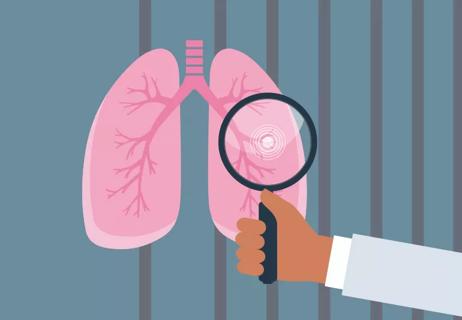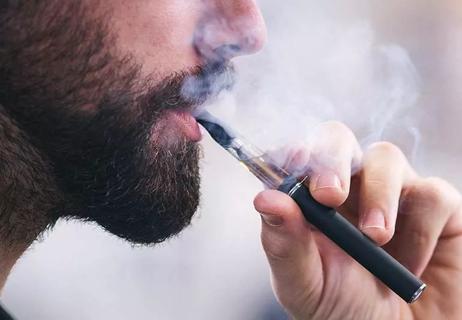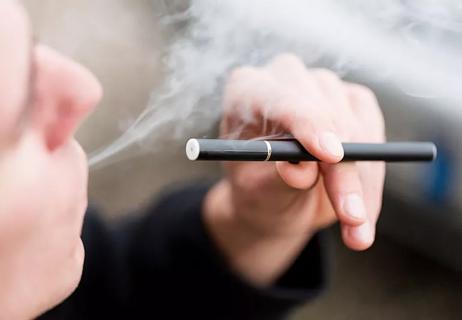Vaping (e-cigarettes) exposes you to thousands of chemicals, including many that cause cancer and lung disease

When electronic cigarettes (e-cigarettes) flooded the market about a decade ago, manufacturers touted them as a low-risk alternative to cigarette smoking and even as a tool to quit smoking.
Advertisement
Cleveland Clinic is a non-profit academic medical center. Advertising on our site helps support our mission. We do not endorse non-Cleveland Clinic products or services. Policy
That’s because e-cigarettes (commonly referred to as vapes and vaping) don’t contain the same cancer-causing tar found in tobacco products. But tobacco is only one of many cancer-causing chemicals linked to lung cancer, one of the deadliest cancers. As smoking accounts for up to 90% of lung cancer-related deaths, it’s no wonder why some might be concerned about the link between vaping and lung cancer and whether vaping raises the same alarms.
Pulmonologist and lung specialist Humberto Choi, MD, explains what to know about vaping and its potential link to lung cancer.
Battery-powered vape devices heat a pod of liquid, creating an aerosol mist that you inhale into your lungs. While this mist may look like harmless water vapor, it’s not. Every time you breathe in, nicotine and other chemicals coat the inside of your lungs and enter your bloodstream.
“Nicotine is a highly addictive drug that changes your brain chemistry,” says Dr. Choi. “The amount of nicotine in a vape varies widely. Some devices have as much nicotine as a pack of cigarettes.”
The chemicals in vape liquids are also linked to lung diseases, including a 2019 outbreak of e-cigarette or vaping-use-associated lung injury (EVALI). According to the U.S. Centers for Disease Control and Prevention (CDC), during the outbreak, more than 2,800 Americans were hospitalized, and 68 people died.
Advertisement
On the surface, tobacco-free vaping might seem safer than smoking cigarettes. But vapes haven’t been around that long. The reality is that it’s too early to know whether the 13 million Americans who vape are putting themselves at increased risk for lung cancer.
“When people with a history of smoking develop lung cancer, it’s usually decades after they started smoking. Most people are in their 60s or older when they get a lung cancer diagnosis,” notes Dr. Choi. “But lung cancer doesn’t develop suddenly. The damage from smoking that causes cells to become cancerous occurs gradually over years.”
To date, there isn’t a verified case of someone developing lung cancer from vaping. “Many chemicals in vapes are known carcinogens, which means they cause cancer,” clarifies Dr. Choi. “We already know vaping harms the lungs. Only time will tell if vaping also causes lung cancer. The potential is certainly there.”
There may be thousands of chemicals in the liquid solution that you inhale, or vape. But it’s difficult to know what you’re inhaling because the chemicals vary by manufacturer and device.
Although the U.S. Food and Drug Administration (FDA) regulates vapes, products from overseas continue to enter the U.S. marketplace without proper vetting. “Users can also modify or add to e-liquids, changing their chemical makeup,” says Dr. Choi.
Specifically, cancer-causing agents in vapes include:
In addition to nicotine and other cancer-causing agents, vapes often contain these other harmful chemicals, too:
In general, anyone with a history of vaping or tobacco use is at higher risk for lung cancer. Additionally, both vaping and smoking carry similar risks for causing damage to your lungs:
Advertisement
If you have a past or current history of vaping or cigarette use, pay attention to health changes that may indicate a lung issue.
“Young people don’t routinely seek medical care because they feel like they should be in good health — even if symptoms suggest otherwise,” says Dr. Choi.
But if you have a history of vaping or smoking, see a healthcare provider for these early signs of lung cancer or lung disease:
“Chest X-rays and lung capacity tests can catch early signs of lung disease,” says Dr. Choi. “If there’s a problem, we can watch for signs of progression or offer treatments that improve symptoms and quality of life.”
And if you need help quitting vaping, smoking cessation tools can go a long way to making sure you kick the habit. When you reduce or completely cut out nicotine, it’s normal to experience nicotine withdrawal. These physical and emotional symptoms can cause you to crave vaping or a cigarette. You may also have headaches, nausea, anxiety or irritability. But these withdrawal symptoms lessen with each day you’re vape-free — and they’re only temporary.
Advertisement
“The same smoking cessation tools we recommend for people who smoke cigarettes also help those who vape,” emphasizes Dr. Choi. “If you’re concerned about your lung health, or if you’re experiencing symptoms that are affecting your health directly, these tools can be of assistance and help improve your quality of life in the long term.”
Advertisement
Learn more about our editorial process.
Advertisement

Smoking and vaping deplete oxygen-rich blood that you need for endurance and fitness

Quitting vaping may not come easily, but it’s important to give yourself grace and patience

Your risk goes down once you quit, but you may still need a lung cancer screening

Early detection of the disease can extend your life, but there are specific testing guidelines

Knowing the signs (like a cough that won’t quit) may help some people detect lung cancer early

Each comes with substantial health risks and should be avoided

More data that two are directly linked

Type 2 diabetes isn’t inevitable with these dietary changes

Applying a hot or cold compress can help with pain